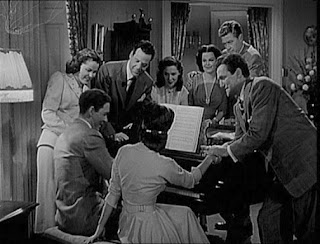Directed by John Badham; produced by Harold Schneider
High school slacker David Lightman (Matthew Broderick) lives for computers. He’s recently discovered the pleasures of hacking into others’ systems. Along with his new friend Jennifer Mack (Ally Sheedy), he attempts to cut into the computer of a game company, in order to play their new game ahead of its public release. While group-dialling a large collection of telephone numbers through his modem, in order to find the company’s number, he accidentally connects with an unidentified computer that offers a selection of games. He chooses the exciting-sounding Global Thermonuclear War. What David doesn’t realise is that he has hacked into NORAD’s master computer. What no one realises is that the computer doesn’t know the difference between games and reality.
An exciting and fun thriller from the early days of personal computers, WarGames holds up very well as a movie, despite depending on technology that rapidly became dated. The story has a good anti-war message and, though one of its central characters is a computer, it is not really about technology and its take-over of decisions that should come from humans. This isn’t The Forbin Project. Rather, the computer, WOPR (War Operation Plan Response), is a stand-in for a completely unemotional entity who looks at war objectively and remorselessly. This makes both the tension and the conclusion more forceful.
The story is better than the script. The characters the latter creates are not deep, though the two leads are given greater scope than the adults. The latter are fairly stock, especially David’s parents, who are the dummies that parents seemed to have been reduced to in movies aimed at adolescents in the 1980s. As well, the conflict between McKittrick (Dabney Coleman), who believes electronics can replace people in decision-making, and Beringer (Barry Corbin), the general who is dubious of computers, gives an acceptable but black-and-white debate, though, except for some language, it is no different than what one might find in young adult fiction.
More thought is put into the character of Stephen Falken (John Wood), the inventor of WOPR, though his decision to help David and Jennifer, after first expressing acquiescence in a possible nuclear war, is sudden, and its cause can only be surmised.
David’s escape from custody in the Cheyenne Mountain Complex looks to be rather too easy, beginning with breaking out of a locked room á la McGyver, then slipping out of the base all together. This too is on the level of a story aimed at fun-loving young adults.
These criticisms might suggest that there is more wrong with WarGames than there is that’s right; this would be erroneous. The direction is very good and keeps the pace going. The climax is invigorating and satisfying, and the lesson given is both fitting and sensible.
The acting makes up for a lot. Broderick and Sheedy are convincing as teenagers basically wanting a good time but rather scared of the consequences of their actions once they see what has occurred. It’s not always easy to show people on the watershed between two phases of their lives, but the performers do well. Coleman is the sort of impatient, snide character he claimed as his own in the ‘80s and Corbin started working on his stock character about this time, too. Also appearing in small roles are John Spencer, Michael Madsen, James Tolkan, Maury Chaykin and an uncredited William H Macy.
Though the story of WarGames is slight, the execution and the resolution are successful, and contribute to making the film a thriller aimed at younger people, but enjoyable for their elders as well.
(For those who like trivia, it may be noted that the characters Falken and Beringer were inspired by (rather than based on) the physicist Stephen Hawking and General James Hartinger, respectively. At one time NORAD used a computer for war-game strategies; its acronym was BRGR. WarGames’s computer was called WOPR, which, after all, is a brand of BRGR.)











































